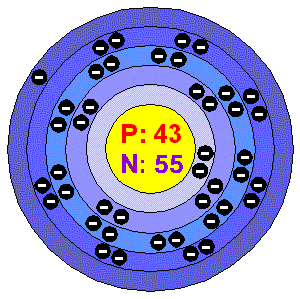Like Rhenium and Palladium, Technetium can serve as a catalyst. For certain reactions, for example the deHydrogenation of isopropyl alcohol, it is a far more effective catalyst than either Rhenium or Palladium. Of course, its radioactivity is a major problem in finding safe applications.
Technetium-99 has also been proposed for use in optolectric nuclear batteries.
Technetium in the environment
Technetium is rarely encountered outside nuclear facilities ar research laboratories. World production of Technetium runs to many tonnes because this element is extracted from spent nuclear fuel rods. However only tiny amounts of this have any commercial use.
